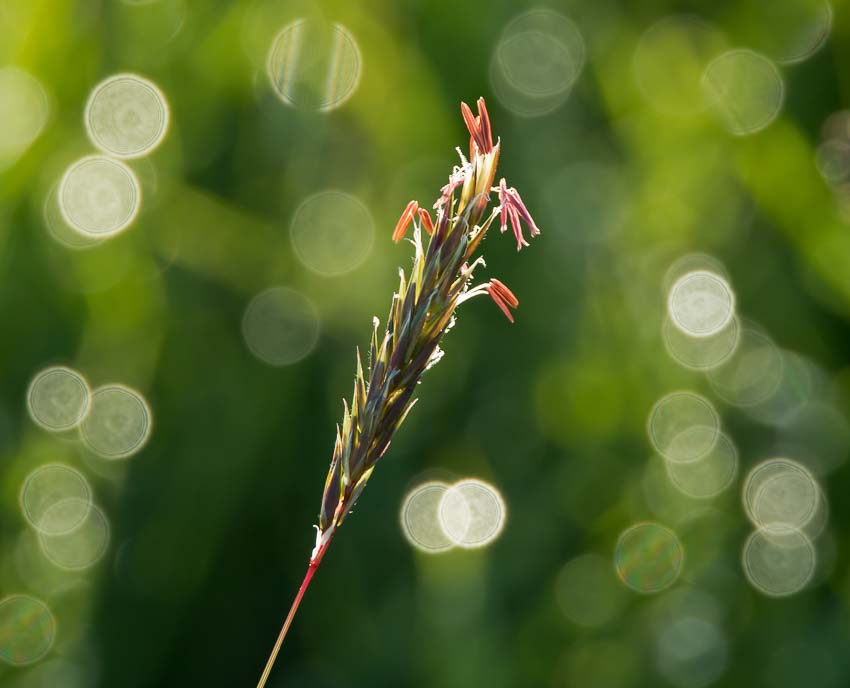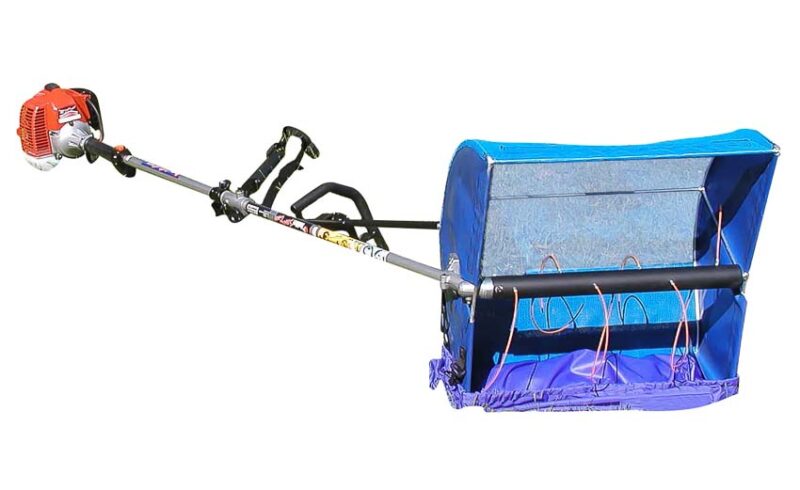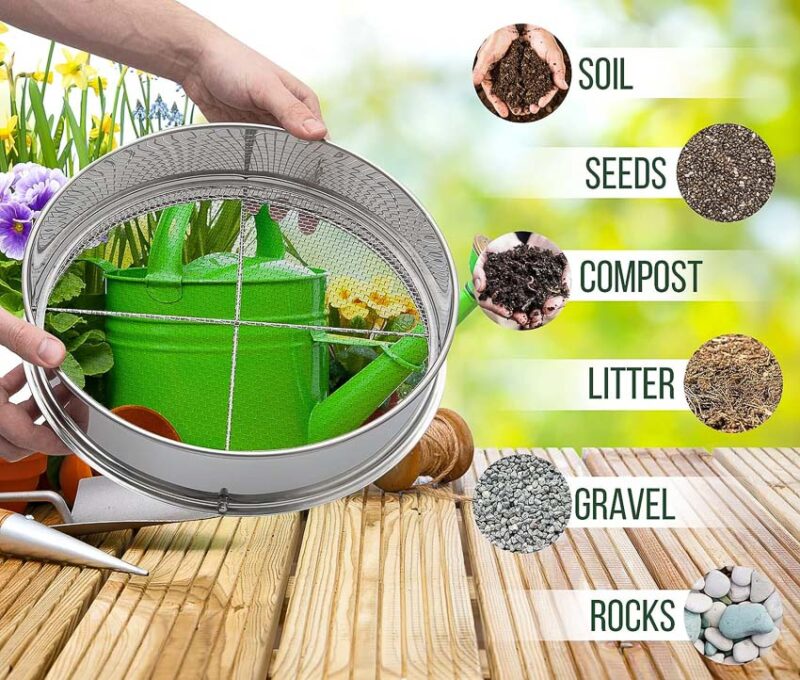If you’re an avid yard enthusiast and gardener, you may already be saving a lot of your seeds. But did you know that you can gather your own grass seed? Learn how to harvest grass seeds with these practical methods and step-by-step instructions.
Understanding the Importance of Harvesting Grass Seeds
Growing grass and collecting the seeds is a good way to find a genetic strain that is more disease and pest-resistant in your area. It’s also fun to experiment with harvesting seeds, and it’s an excellent learning activity to share with children.
Why Harvest Grass Seeds?
You can harvest your own grass seed to save money and get the exact grass mix that you want. If you know the best types of grass for your region, you can design a grass mix specifically for your microclimate to ensure your lawn stays healthy.
Another reason to harvest your own grass seeds is that you can carefully select the grass seeds you want and avoid weed seeds in your mix. Most commercial lawn seed mixes have a small percentage of weed seeds.
Want to protect your lawn? OPE Reviews can help teach you how to get rid of weeds in grass.
Best Time to Harvest Grass Seeds
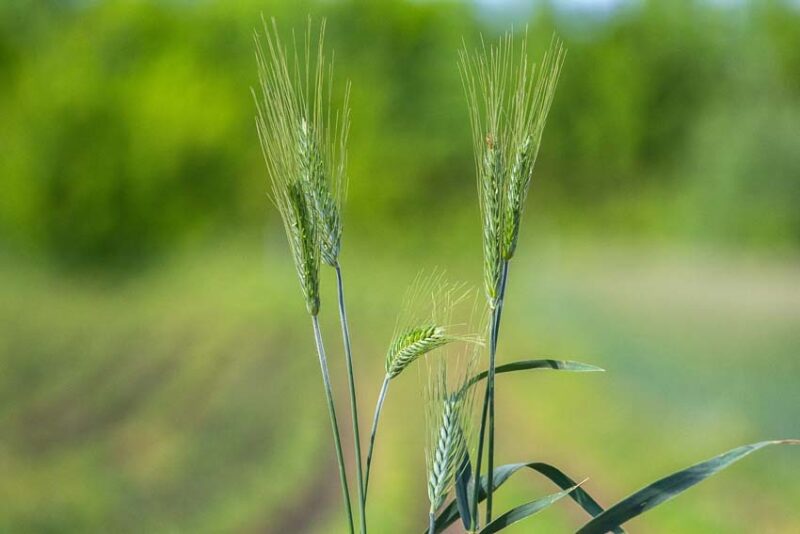
After flowering, grass takes about 20 to 30 days to mature into seeds ready to harvest. Commercial seed producers have to time the harvesting of grass seeds just right to achieve maximum production and seed viability.
However, since all types of grasses flower at different times, the seed heads don’t all ripen and mature at once. That means you may need to harvest multiple times.
Grass seeds ripen fastest in warm, dry weather, usually during mid to late summer, and cool, wet weather will delay seed ripening.
Grass seed heads usually hold onto their seeds for about 10 to 15 days before the seeds are shed. Seed shedding is a process known as shattering, and it can make the seeds harder to gather because they fly everywhere when you touch the stalk.
Grass seed heads ripen from the top down, so you can tell when the seed is ready to harvest by testing the tip of the seed head. The best time to gather grass seeds is when the seeds shatter when you softly strike the seed head into the palm of your hand.
Effective Methods of Harvesting Grass Seeds
Harvesting enough grass seed for your lawn isn’t hard to do. It’s not a major production requiring a grain combine like commercial seed growers use, but it can be a lot of work. Here are a few methods you can use.
Hand-Harvesting
Harvesting grass seeds by hand is a simple but effective method. Wear gloves to protect your hands, and have a container or seed bag to put the grass seeds in.
Holding the base of the seed head with one hand, use the other hand to squeeze your thumb and index finger together. As you continue to squeeze gently, slide your hand upward to pull the seeds and chaff off the seed head and into the palm of your hand.
Put the seeds into a bag and continue collecting until you have as many as you want or they are all collected.
Bag Collection Method
Another way to gather seeds by hand is the bag collection method. With this method, you will gather several stalks of grass together in one hand, cut the stalks with a pair of shears or pruners in the other hand, and place them upside down in a collection bag.
If you use brown paper bags for this method, you can hang the bags to dry in your garage or shed. Once completely dry, the seeds will shatter and fall from the stalks easily.
The grass seeds will remain at the bottom of your bag, making them easy to clean and separate from other organic matter. Once you have removed the grass, stalks, and chaff, transfer the seeds to an airtight container for storage.
Brushing and Raking
If you can get your hands on an antique grass seed harvesting rake, that’s an excellent option. You could even make your own if you’re good with metals and welding. They are similar in appearance to a berry harvesting rake, with tines to catch the grass seed and chaff.
Another option is a portable handheld seed stripper, but they are expensive. At almost $3,000, they will be outside the price range of most home DIYers, but they would be a good investment for a small farmsteader.
Handheld seed strippers, also known as brush harvesters or grass seed harvesters, look like a cross between a weed eater and a rototiller. They are easy to maneuver through a field of tall grass and take a lot of work out of seed harvesting.
Step-by-Step Guide: How to Harvest Grass Seeds
It’s fun to harvest all types of seeds to grow in your yard and garden, and it can yield some surprising results because you never know what types of plants will cross-pollinate with each other.
Follow this step-by-step guide to harvesting grass seeds from your yard, and enjoy the personal satisfaction of raising your own seed.
Step 1: Identify Mature Seed Heads
Once grass starts to flower, it takes about 20 to 30 days before it is mature enough to harvest. Dry weather will make it mature faster, while wet, cool weather will delay the process.
As soon as the grass seeds start to form, pick one and break it apart. You’ll notice that the grass seeds have started to form, but they are still green.
Every species of grass is slightly different in the way it matures, but if you rub a mature grass seed head in between the palms of your hand, you’ll notice that the seeds come out of their husks, or chaff, easily.
Step 2: Choose the Harvesting Method
Your harvesting method will likely depend on a few factors, such as how strong your back is, how much time you have, and how much grass seed you’re trying to collect.
It’s not hard to collect grass seed, but it can be hard to collect a lot of it. Commercial seed growers harvest about 400 to 600 pounds of grass seed per acre, which boils down to about 1.3 ounces per square yard.
For many homeowners, either of the manual harvesting methods will be suitable for the amount of space that they have.
Step 3: Begin Harvesting
Once your grass is ready to harvest, gather your supplies to start harvesting. Here’s what you need:
- Garden gloves
- Shears or pruners
- Bags
- Handheld harvester or portable seed stripper (optional)
- A sieve for winnowing the seed
Using the manual harvesting methods, strip or cut the grass seed heads and place the contents in your bags. Do the same if you’re using a handheld harvester rake.
If you’re using a portable seed stripper, maneuver it around your grass seed plot until you’ve mowed all of the seeds. Depending on the size of your plot, you may need to empty the hopper several times.
Step 4: Cleaning and Storing Seeds
If you used the bag collection method, store the grass seed heads in the bag for several weeks. Shake the bag every week to dislodge as many seeds as you can.
With the other methods, you will want to strain as much organic matter from your seeds as possible. Separating the grass seed from the chaff completely is hard to do without a machine, but it probably doesn’t need to be perfect for your purposes.
Once you’ve dried, sorted, and cleaned your seeds, you should store them in a pest-proof airtight container. Moisture can cause them to mildew, and many opportunistic pests would love to eat them if they could.
Benefits of Harvesting Grass Seeds
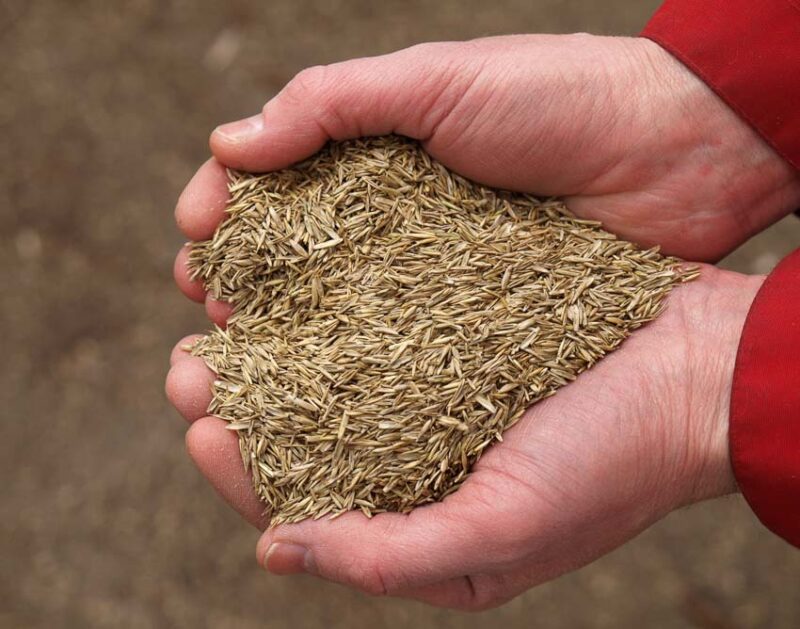
Harvesting your own seeds has many benefits, and it’s a fun hobby many people enjoy. Learn more about the benefits of harvesting your own grass seeds, and then give it a try to see if it’s something you find satisfying.
Custom Seed Varieties
When you save your own seeds, you can select the types of grass you want and develop your own custom blends. If you choose grasses that thrive in your yard, your custom seed blend could be a mix that achieves superior results for your microclimate, with better pest resistance and drought tolerance.
If you choose seed from a perennial grass in your yard, you’ll know how it fares in the winter, and you’ll be collecting grass seed that has a cold tolerance that matches your climate.
Cost Savings
Harvesting your own grass seed is cost-effective. If you use manual seed collection methods, letting your grass go to seed and collect it costs nothing.
Some specialty seed mixes are expensive, costing as much as $50 per pound. Alternatively, if you buy expensive seed mixes, they are often unsuitable for your lawn or contain a lot of weed seeds.
Environmental Sustainability
Commercial grass growers use a lot of pesticides, chemicals, and herbicides on their seed plots, and then the seed is packaged, distributed, and sold. When you grow it in your yard, you can skip all of that and grow an organic seed that is environmentally sustainable.
Use recycled packaging materials and bags when you’re collecting and storing your grass seed to reduce your carbon footprint even more.
Genetic Diversity
More people are becoming aware of the critical need for biodiversity, which you get when you grow and save your seeds. By growing your seed mix, you can develop a more sustainable strain in your region.
Commercial seed growers develop new varieties by selecting the plants with desired characteristics each season and planting them. Genetic diversity in turf seed is important because when a disease attacks one species of grass, another may have resistance.
FAQ: Common Questions About How to Harvest Grass Seed
1. Can I harvest seeds from any type of grass?
Worldwide, there are about 13,000 species of grass, and while all of them produce seeds, some of them are difficult to establish from seedlings. Some types of lawn grass are cultivated more easily by plugs or sod. However, that doesn’t mean you can’t try any type of grass. Many types of native grasses grow naturally everywhere that you can try to collect seeds from and grow.
2. Will harvesting seeds damage my lawn’s appearance?
Most people who decide to harvest grass seeds choose a part of the lawn that they can let go to seed. That means you have to stop mowing it and let it get long and tall. It may take several weeks to flower, but then, once it does, you only have to wait about 20 to 30 days for the seeds to mature. Then, once you collect them, your lawn can return to normal.
Be sure to explore our tips on how to care for your lawn!
3. How do I know if the seeds are mature and ready for harvest?
Seeds are mature and ready to harvest when they start to “shatter.” Until they are completely ready to harvest, grass seeds are stuck to the shaft. Once they mature and dry completely, they come loose and shatter. The process starts from the tip of the seed head and works its way down, so as soon as you notice shattering at the tip, the seed is ready to collect.
4. Can I store harvested seeds for future use?
Seeds will last many years, although the germination rate usually falls the longer they are stored. It’s critical to store them in a container that protects them from things like light, moisture, and pests, otherwise, your hard work can be destroyed by moisture or pests.
5. Are there any risks or challenges to be aware of when harvesting grass seeds?
Yes. There’s generally a right time for everything, like when to fertilize lawn grass. And, likewise, it’s important to know when to harvest seeds. It’s possible to harvest grass seeds too early, before the seeds are mature, in which case they won’t be viable.
Discover more about a topic closely related to harvesting grass seed. Explore our comprehensive articles about lawn grasses, including: How to Grow Fescue Grass, Guide to Kentucky Bluegrass, St. Augustine Grass Care Guide, Centipede Grass Planting and Caring, Buffalo Grass Lawn Guide, Guide to Zoysia Grass, How to Get Rid of Bahia Grass, and Bermuda Grass.

